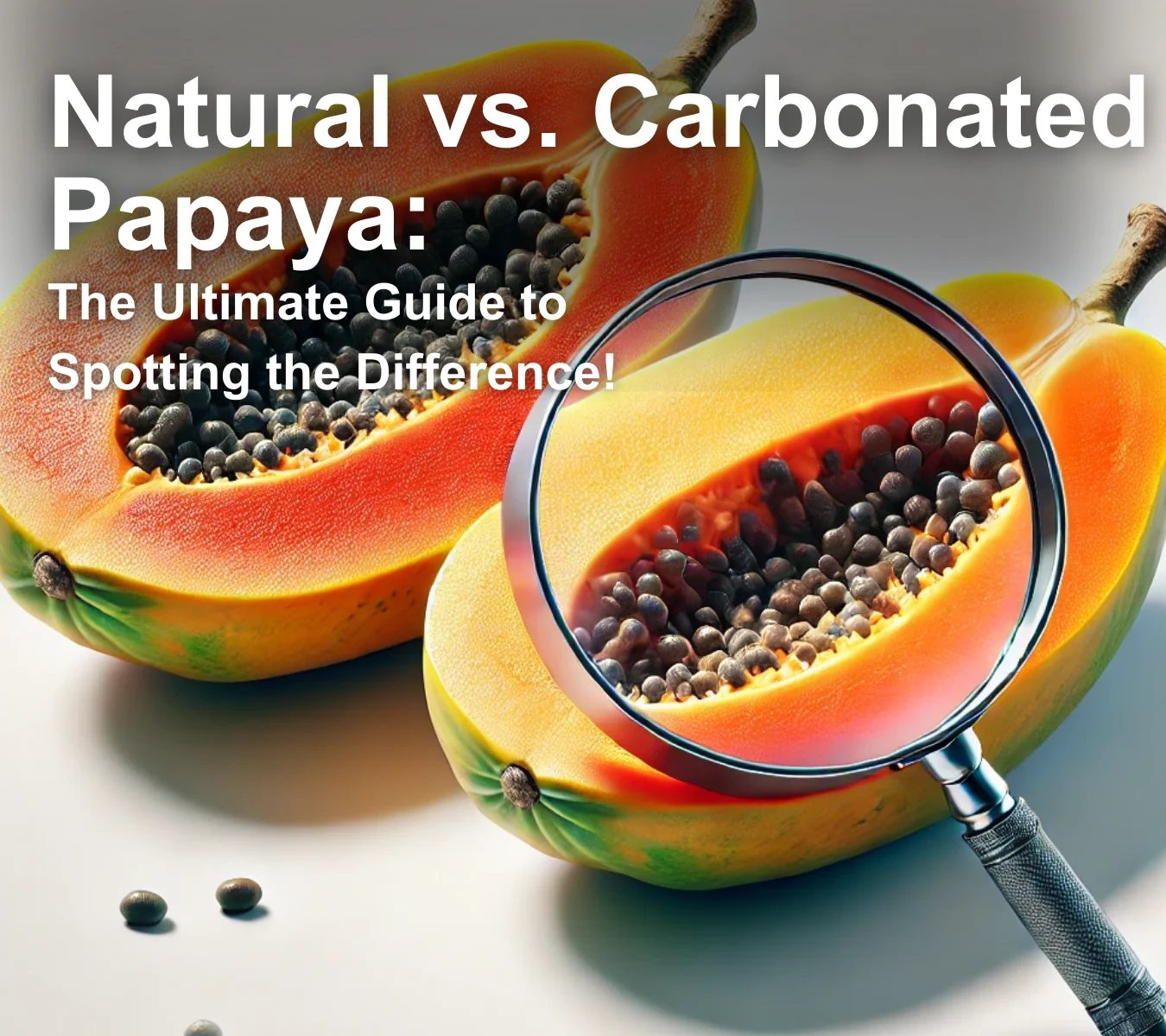Introduction
Papayas are loved for their sweet taste, digestive benefits, and rich nutrient profile. However, not all papayas on the market are natural—some are artificially ripened using chemicals like calcium carbide, which releases acetylene gas, mimicking natural ripening but posing health risks. This guide will help you distinguish between a naturally ripened papaya and a chemically treated one using simple kitchen tests and shopping tips.
Key Differences Between Natural and Carbonated Papayas
| Feature | Natural Papaya | Carbonated (Chemically Ripened) Papaya |
|---|---|---|
| Color | Uniform yellow-orange with slight green patches | Uneven, overly bright yellow with green spots |
| Texture | Firm yet slightly soft when ripe | Unnaturally soft, sometimes mushy |
| Taste | Sweet with a natural aroma | Bland or slightly sour with a chemical aftertaste |
| Ripening Process | Gradual ripening from inside out | Rapid, surface-only ripening |
| Shelf Life | Longer, ripens naturally over time | Shorter, spoils faster due to chemical exposure |
| Odor | Mildly fruity and pleasant | May have a slightly chemical or artificial smell |
Kitchen Tests to Identify Carbonated Papayas
If you have already bought papayas and suspect artificial ripening, try these simple tests:
1. Water Soak Test
How to do it: Soak the papaya in hot water for 20–30 minutes. If chemicals like calcium carbide were used, white or powdery residue may appear in the water.
Results: Natural papayas will not release any white powder.
2. Cut and Observe Test
How to do it: Cut the papaya in half and examine the inside.
Results: If naturally ripened, the color will be uniform with soft, juicy flesh. Chemically ripened papayas often have an unripe, hard center despite appearing ripe outside.
3. Smell and Taste Test
How to do it: Smell the papaya before eating and take a small bite.
Results: Natural papayas have a rich, sweet aroma, while chemically treated ones may smell artificial. A bitter or slightly metallic taste can also indicate chemical exposure.
4. Skin Texture Test
How to do it: Gently press the papaya’s skin.
Results: A naturally ripened papaya will yield slightly under pressure without feeling too soft. A chemically ripened one may feel unnaturally smooth and overly soft.
How to Choose a Natural Papaya When Buying
To avoid carbonated or artificially ripened papayas, follow these tips when shopping:
🔸 Look for gradual color changes – Natural papayas have a mix of green and yellow rather than an all-bright, unnatural yellow.
🔸 Avoid overly soft papayas – If the fruit feels too soft or mushy, it may have been artificially ripened.
🔸 Check for uniform ripening – Natural papayas ripen evenly, while artificially ripened ones may have a patchy, uneven appearance.
🔸 Smell the fruit – A strong, natural fruity aroma indicates proper ripening, whereas a lack of smell or chemical-like odor is a red flag.
🔸 Buy from trusted sources – Purchase from organic stores, farmers’ markets, or suppliers who avoid artificial ripening methods.
Conclusion
Distinguishing between a natural and carbonated papaya is crucial for your health and well-being. By using simple kitchen tests and making informed choices when purchasing, you can ensure you’re consuming safe, naturally ripened fruit. Stay aware and choose wisely for a healthier diet!
Want More Food Safety Tips?
Explore more guides and kitchen hacks at Herbopedia.fyi!
